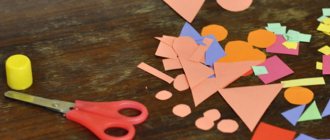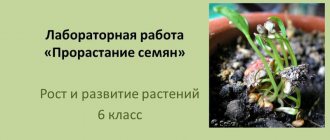Basic techniques
Most beading patterns involve the use of certain techniques. Before you start creating crafts, you need to get acquainted with the basic weaving techniques, master them and learn how to implement them.
Circular (French)
The circular weaving technique was created in France. This method is popular among novice needlewomen, as it is very clear and easy to perform. It is usually used to create floral motifs. The second name for the technique is threading or weaving with arcs, since the beads are attached around the wire in arcuate rows. Flowers made in this way are assembled from separate parts: stamens, leaves and petals.
It is better for beginning craftswomen not to start weaving a whole bouquet until the French technique has been mastered and tested in practice. Therefore, this master class offers to learn circular weaving on petal blanks, which can later be turned into beautiful earrings.
With the help of a step-by-step description, a beginner will be able to weave a spectacular product, even if it is his first time taking on such work:
- Cut a piece of wire to the required length from the coil of wire. If small beads are used, 60 centimeters are enough, large ones - 70-80 centimeters.
- Twist a small loop at one end of the wire. To do this, twist it several times, as shown in the picture (Fig. 1).
- Assemble the core of the work with 5 beads. Wind the free end of the wire around the rod, making a loop (Fig. 2). The beads will stick tightly to the rod and will not slip off.
- Proceed to the second row of the petal; to do this, cast on 8 beads. Keep the wire parallel to the main row, and then bring it out of the last bead at an angle of 90 degrees and wrap it around the rod twice (Fig. 3-4). On the other side of the main row, make another arc in the same way (Fig. 5).
- The earring petal will consist of 9 rows. The arcs of the remaining rows are made similarly to step 4, only to weave them you need to collect 2-3 more beads than in the previous one. That is, the arcs of the third row will consist of 10-11 beads, the fourth - 12-14, the fifth - 15-17, and so on.
- To complete the finished petal, wrap the wire around the stem 3-4 times. Trim off any excess frame.
The preparation is ready! In order to get earrings, you need to make another petal according to a similar pattern and attach earrings to the loops that were formed at the second stage of work (step 2). Earrings are the very parts of earrings that are inserted into the ears.
Preparing for work
Before you start weaving, you should prepare the necessary materials and tools. You shouldn't buy the first bead you see. The appearance and durability of the finished product will depend on its quality. Today, leading positions in the market are occupied by Japanese, Chinese and Czech manufacturers.
Types of beads
You can find beads on sale in four main sizes. The smallest beads have a diameter of 1.5 millimeters and are produced under number 15/0. Large beads with a diameter of 6 millimeters are produced with the designation 6/0.
These numbers didn't just appear out of nowhere. How many of these beads are required to make a row of them 1 inch long, this number is indicated in the size designation.
Handicraft stores offer the following assortment of beads:
- Plastic is the cheapest. It can be purchased for a beginner or for a child. Experienced needlewomen usually prefer higher quality materials.
- Glass beads come in various sizes and shapes: round, square, glass beads.
- Faceted - distinguished by the presence of edges, valued for its high decorative qualities and shine. Previously, it was produced by French and Czech manufacturers, but now only faceted beads made in Japan can be found on sale.
- Beads of unusual shapes - droplets, flowers, butterflies, stars, cubes, triangles.
- Delica (DELICA) - high-quality material from Japan. The beads are the same size and cylindrical in shape. Despite the high price, many craftswomen choose it to create complex works.
There are also transparent, shiny, pearlescent and matte beads that shimmer in the sun and have silver-plated holes.
When choosing a material for work, it is better to rely on the recommendations that are often included in weaving patterns. With experience, you will understand which beads to purchase for a particular craft.
Frame selection
In addition to beads, craftswomen also need frame material on which the beads will be strung. For this, fishing line is most often used: it is durable and low in price. This material is well suited for creating three-dimensional figures, for example, animals or people. The fishing line has elasticity and rigidity, which are so necessary for this type of work.
Wire or threads are also used for these purposes. You can buy special thin copper wire in craft stores. Before purchasing, you should conduct a strength test, because if it tears or breaks too easily, the craft will not last long.
If the diagrams indicate that you need to use thread for weaving, when choosing it, you should proceed from the following rules:
- Regular spool threads are made of cotton, so they break quite easily, which can ruin your work.
- You can find special nylon threads on sale: they are quite strong, so they are unlikely to break during the process. However, it is worth considering that the nylon is constantly trying to straighten and unravel, and this can significantly complicate the work.
- An inexpensive and convenient option for weaving is rubber thread. Bracelets, baubles and hair ties are made from this material.
Schemes for beginners
You can create real masterpieces from beads, for example, jewelry or original decorative elements. Doing such work with your own hands will allow you to fully unleash your creative potential, and will also become an interesting hobby.
Today, beadwork is very popular; master classes and lessons on this type of needlework can be easily found on the Internet. Among them there are both complex works for experienced craftsmen, and easy patterns for beginners.
Snowflake made of beads
This craft is suitable for those who really want to work with beads, but are not confident in their own abilities. It is very easy to make such a snowflake from beads, beads and wire. You can entertain your child and invite him to create decorations for the apartment for the New Year.
To make a snowflake you will need:
- beads and beads of different sizes, but the same color scheme;
- three pieces of thin but strong wire;
- pliers.
Prepare all necessary materials and tools. Think about what color and size snowflake you want. After which you can start working.
First, make a frame for the future snowflake:
- To do this, place one piece of wire vertically on the table.
- Place the other two on top of the first one crosswise.
- Secure the workpiece in the middle with fishing line.
Thus, you should get a snowflake with six rays.
Place beads and beads on one of the rays in any order, not reaching the end by about 1 centimeter. Bend the free end of the wire with pliers so that the beads cannot roll off it.
Design the remaining rays in the same sequence as the very first. This way you can make many snowflakes with different numbers of rays.
lesson notes on beading technology
17 Aug 2012. Beading. Making a ladybug. 3rd grade. Lesson summary on the subject "Technology" 3rd grade at the educational complex "Harmony". A summary of a lesson on technology in grade 4 on the topic “flying crafts... will help students master the initial basics of beading techniques. 6th grade Technology for the production of embroidered seeds + CD. KTP from labor skills, from technology 5 - 11 classes. (variable part. Lesson plans. Notes for beadwork lessons 1 year of study... by the activities of 5th grade students, I developed lesson notes on technology. Notes for a technology lesson in 4th grade. According to UMK Harmony. 57, presentation for the lesson. Progress of the lesson. History beadwork (appendix). V. Following. April 10, 2012. Lesson plan on technology (5th grade) on the topic: Lesson. Decorative and applied arts (beadwork). Kalieva Adel. August 17, 2012. Beadwork. Making a ladybug. 3 class. Lesson summary on the subject "Technology" 3rd grade in the educational complex "Harmony". 2 days ago. Presentation for a technology lesson on the topic "Baby Notebook", 4th grade (.ppsx). Abstract of an art lesson in 4th grade on the topic: "Space. Notes on beading.. Notes of a training session on beading... Notes of a technology lesson:"Working with artificial material. 2 days ago. Presentation for a technology lesson on the topic "Baby Notebook", 4th grade (. ppsx). Lesson notes Fine arts in 4th grade on the topic: “Space. Technologies: Stitch Art Easy program, Beads with MyJan (for creating an embroidery pattern). Lesson summary:. To develop educational interest in the subject through a historical excursion into the world of embroidery and beading. improve.
: 772
- abstract,
- lesson,
- technologies,
- beading
- 24 November 2014, 21:23
- Anatu
Smart thoughts (0)
Collapse / Expand
The author of the topic forbade adding thoughts
We also recommend reading interesting things from user anatu
- answers to the algebra workbook 8th grade Kolyagin Answers and workbooks for algebra textbooks for grades 5-6-7-8-9-10-11.. GDZ for the workbook on ...
- what crafts you can make from organza with your own hands Thanks to this technology, you can quickly make many wonderful ones. 14. Crafts...
- results of the Olympiads of the municipal stage of Mordovia in mathematics 2013 2014 The All-Russian Olympiad for schoolchildren is held annually on the initiative and under the auspices of….
- GDZ Zoshit legal studies practical course 9th grade GDZ Online, Ready-made homework for 9th grade. GDZ 7, 1, 2, 3, 4, 5, 6, 10, 11, 8 grades problem book....
- GDS spotlight 10: student's book GDZ and textbook for the textbook - “Spotlight 7” Student's Book. English in Focus, E. Vaulina, D. Dooley,…
- The set contains a systematic presentation of a mathematics course on the theory of reals....
- Gromtseva control and independent work in physics, grade 9. Independent and control work in algebra and geometry for grade 9. Ershova A.P....
- GDZ worker Zoshit English 5th grade Alla Nesvit 2013 Mathematics · Music. (GDZ) READY HOMEWORK: GEOMETRY 10TH GRADE. Task: 5……




